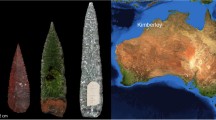Abstract
The development of technology is tightly interlinked to the introduction of the weaving loom, and in particular with the complex pattern loom. Probably, the most important testimony of this link is provided by the Chinese character ji with its various meanings including intelligence, human excellence, crossbow-trigger and weaving loom. Furthermore, the technological principles behind the pattern loom have been the key-inspiration behind very important breakthrough technological inventions throughout human history as e.g. the French Jacquard loom, telegram, then computers. However, the archaeological evidence has been missing. A new exceptional Han dynasty burial in Laoguanshan, Chengdu, southwest China in 2013, has revealed four models of wooden pattern looms dating back to 2nd century BCE, resulting in the first evidence of the use of pattern loom in the world. Hence, these finds provide the earliest existent archaeological material which is technological speaking the point of departure for our present highly technological world. We have reconstructed the finds in order to identify the exact technological principles behind these pattern looms. Our results reveal that there are two systems for the movement of warp and weft resulting in a highly complex multi-shaft patterning principle with two different power transmission systems.
Access this chapter
Tax calculation will be finalised at checkout
Purchases are for personal use only
Similar content being viewed by others
References
Chengdu Institute of Archaeology: Jinzhou Conservation Center for Cultural Heritage. Archaeological report of Han tombs at Laoguanshan, Tianhuizhen, Chengdu, Sichuan. Archaeology 7, 59–70 (2014)
Joseph, N.: Science and Civilisation in China. Cambridge University Press, Cambridge (1988)
Zhao, F.: Treasures in Silk: An Illustrated History of Chinese Textiles. ISAT/Costume Squad (1999)
The Archaeological Research Group of the Shanghai Textile Research Institute and the Shanghai Silk Industry Corporation. A Study of the Textile Fabrics unearthed from Han Tomb No.1 at Mawangtui in Changsha. Wenwu Publisher (1980)
Chen, Z.Y.: Han Tomb No.168 at Fenghuangshan, Jiangling. J. Archaeol. China 4, 455–513 (1993)
Eric, B.: The Book of Looms: A History of the Handloom from Ancient Times to the Present. Brown University Press (1979)
Zhao, F.: Reconstruction of back-strap loom of Liangzhu. Southeast Culture 2, 108–111 (1992)
Vollmer, J.E.: Archaeological and ethnological considerations of the foot-braced body tension loom. Studies in Textile History, Royal Ontario Museum, 343–354 (1977)
Zhao, F.: Reconstruction of axle-treadle loom in Han Dynasty. J. China Text. Univer. (English edition) 4, 60–65 (1997)
Flanagan, J.F.: The origin of the drawloom used in the making of early Byzantine silks. The Burlington Magazine for Connoisseurs, 167–172 (1919)
Crowfoot G.M., Griffiths, J.: Coptic textiles in two-faced weave with pattern in reverse. J. Egypt. Archaeol. 40–47 (1939)
Kuhn, D.: Silk Weaving in Ancient China: From geometric figures to patterns of pictorial likeness. Chin. Sci. 12, 77–114 (1995)
Riboud, K.: A detailed study of the figured silk with birds, rocks and tree from the Han dynasty. Bulletin de Liaison, CIETA 45, 51–60 (1977)
James, J.M.: Silk, China and the drawloom. Archaeology 39(5), 64–65 (1986)
Hu, Y.D. et al.: The development of Shu Silk Loom from a point of view of Dingqiao Loom: a field research report on the multi-treadle and multi-shaft Loom. Newsl. Hist. Text. Sci. Technol. China 1, 50–62 (1980)
Tu, H.X.: Research and Reproduction of Silk Textiles from the Warring States Period. Donghua Univesity (1983)
Sun, Y.T.: The development of textile technology during the warring states to Qin and Han Dynasties. Res. Hist. 3, 143–173 (1963)
Gao, H.Y., Zhang, P.G.: A Research of Development of Silk Weaving Machinery in Ancient China. China Textile Press (1997)
Xijing zaji (Miscellaneous records of the western capital) of the sixth century, attributed to Liu Xin or Ge Hong but probably by Wu Jun of Liang
Notes by Pei Songzhi for Wei Zhi (The Records of Wei Kingdom) of San Guo Zhi (The Records of Three Kingdoms)
Zhao, F.: Reproduction of Han Dynasty Oblique Treadle Loom. Cultural Relics 5, 87–95 (1996)
Wang Yi. Jifu Fu (Rhapsody on women weavers) from the Eastern Han Dynasty
Acknowledgments
This project is supported by the Compass Plan, State Administration of Cultural Heritage, 2014. This a joint project by more than seven institutes, and we should thank the following people who helped and contributed in various ways: Professor Ziqiang Wang and Professor Yang Zhou of China National Silk Museum who studied the archaeological loom models; Mr. Mingbin Li and Mr. Yang Li of Chengdu Museum who assisted authors in dimensional measurement of the archaeological loom models; Ms. Jialiang Lu of Zhejiang Sci-tech university and Dr. Le Wang of Donghua University who drew the images of reconstituted jin silks; Dr. Hui Liu of Institute for the History of Natural Sciences, Chinese Academy of Sciences who provided historical documents. We also would like to thank Dr. Karin Frei of National Museum of Denmark for giving valuable suggestion and editing the manuscript.
Author information
Authors and Affiliations
Corresponding author
Editor information
Editors and Affiliations
Rights and permissions
Copyright information
© 2016 Springer International Publishing Switzerland
About this paper
Cite this paper
Zhao, F. et al. (2016). Mechanism of Laoguanshan Pattern Looms from Late 2nd Century BCE, Chengdu, China. In: López-Cajún, C., Ceccarelli, M. (eds) Explorations in the History of Machines and Mechanisms. History of Mechanism and Machine Science, vol 32. Springer, Cham. https://doi.org/10.1007/978-3-319-31184-5_19
Download citation
DOI: https://doi.org/10.1007/978-3-319-31184-5_19
Published:
Publisher Name: Springer, Cham
Print ISBN: 978-3-319-31182-1
Online ISBN: 978-3-319-31184-5
eBook Packages: EngineeringEngineering (R0)




